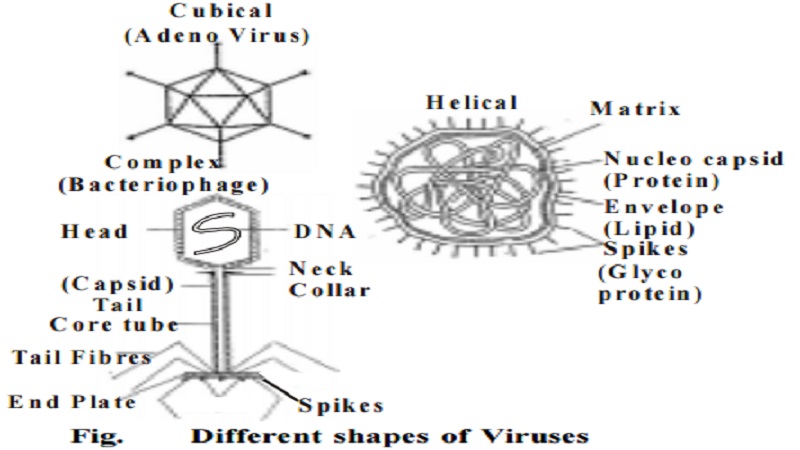Chapter: 11th 12th standard bio zoology Human Body higher secondary school
Viruses : Size, Shape And Structure of a Virus

Viruses : Size and Shape
Viruses are very minute particles that they can be seen only under electron microscope. They are measured in millimicrons ( 1 millimicron = 1/1000micron). (1micron - 1/1000 millimeter). Generally they vary from 2.0 mm to 300 mm in size.
Very small size and ability to pass through bacterial filters are classic attributes of viruses. The following methods are used to determine the size of the viruses.
Filtration through membranes of graded porosity: In this method viruses are made to pass through a series of membranes of known pore size, the approximate size of any virus can be measured by determining which membrane allows the virus to pass through and which membrane holds it back.
Comparative measurements:
The following data is used for reference.
a. Staphylococcus has a diameter of 1000 mm.
b. Bacteriophage varies in size from 10-100 nm.
Broadly speaking viruses occur in three main shapes:
1. Cubic symmetry: polyhedral or spherical - eg. Adeno virus, HIV
2. Helical symmetry: e g . Tobacco Mosaic virus (TMV), Influenza virus.
3. Complex or atypical eg. Bacteriophage, Pox virus.
Structure of a virus
A virus is composed of two major parts
1. Capsid (the protein coat)
2. Nucleic acid.
The capsid is the outer protein coat. It is protective in function.
It is often composed of many identical subunits called capsomeres. Some of the viruses have an outer covering called envelope eg. HIV. They are called enveloped viruses.
Others are called naked viruses or non- enveloped viruses. The capsid is in close contact with the nucleic acid and hence known as nucleocapsid. The nucleic acid forms the central core. Unlike any living cell a virus contains either DNA or RNA, but never both. The infective nature of the virus is attributed to the nucleic acid while host specificity is attributed to the protein coat.
Virion
Viroids
Prions(pronounced 'preeons' )
Related Topics